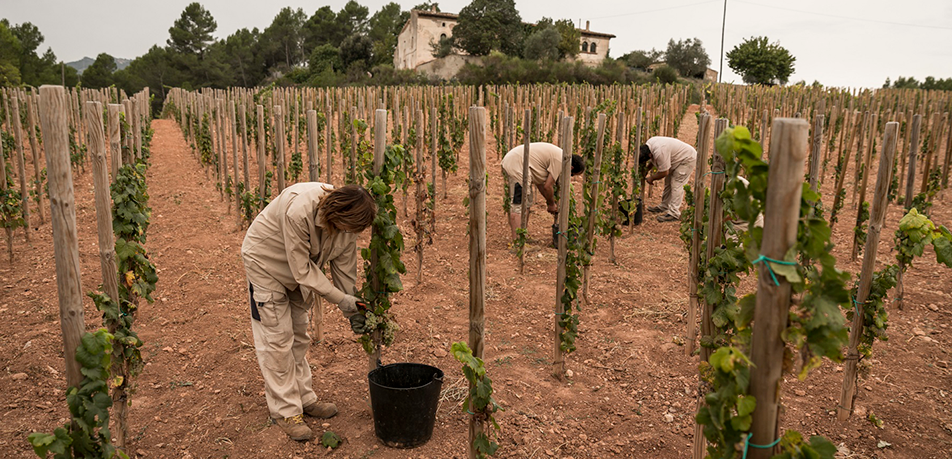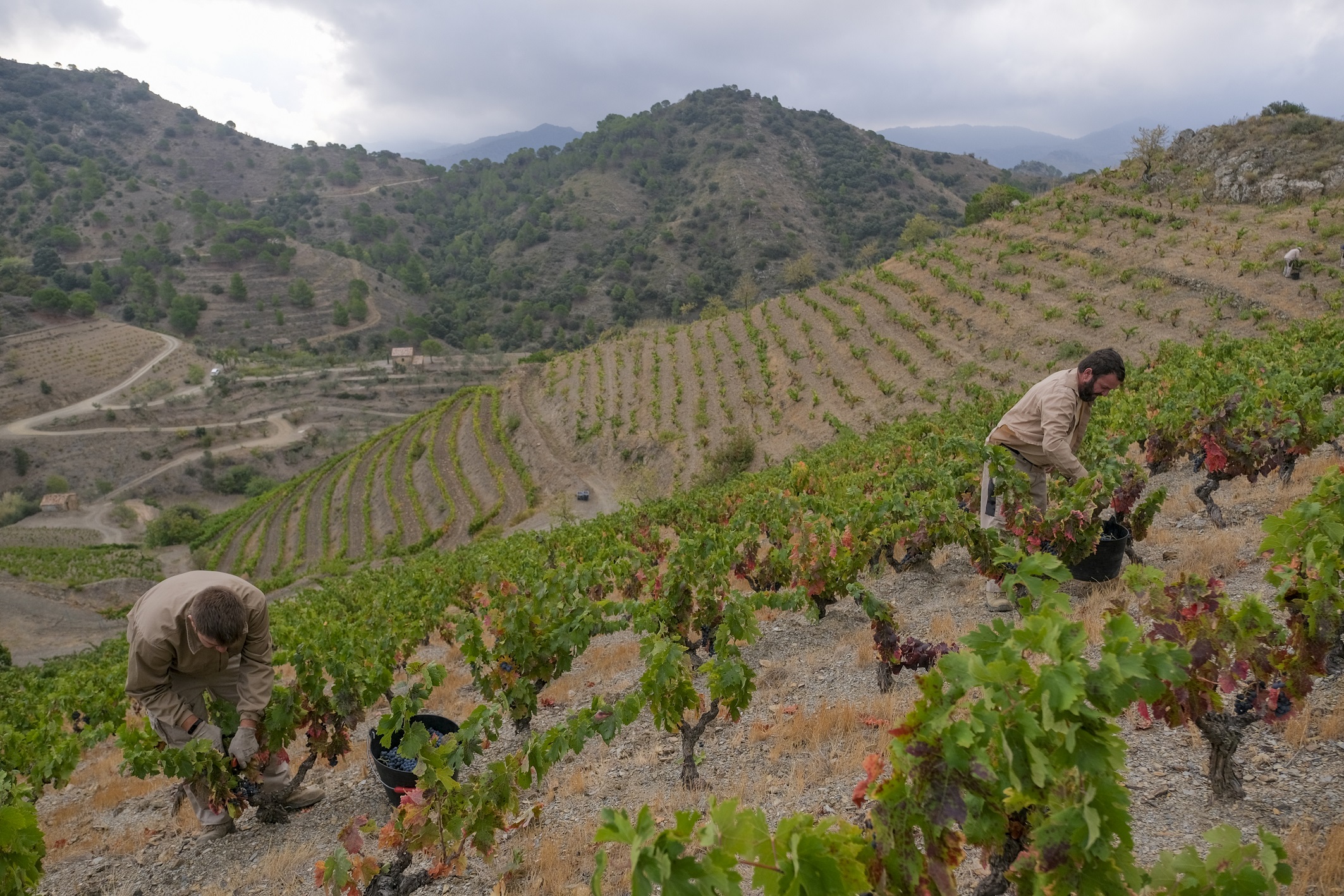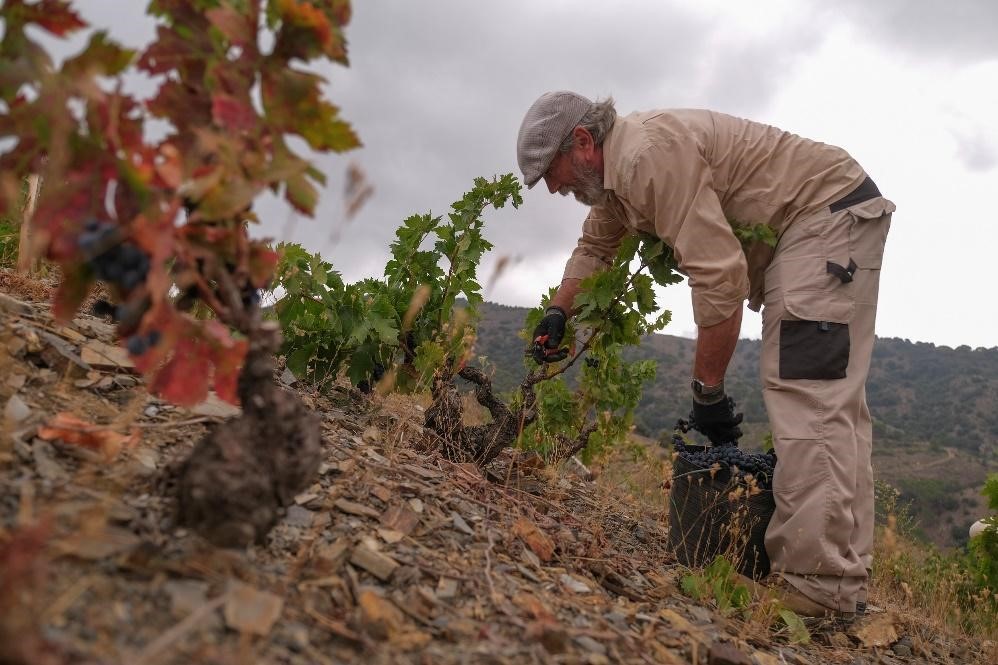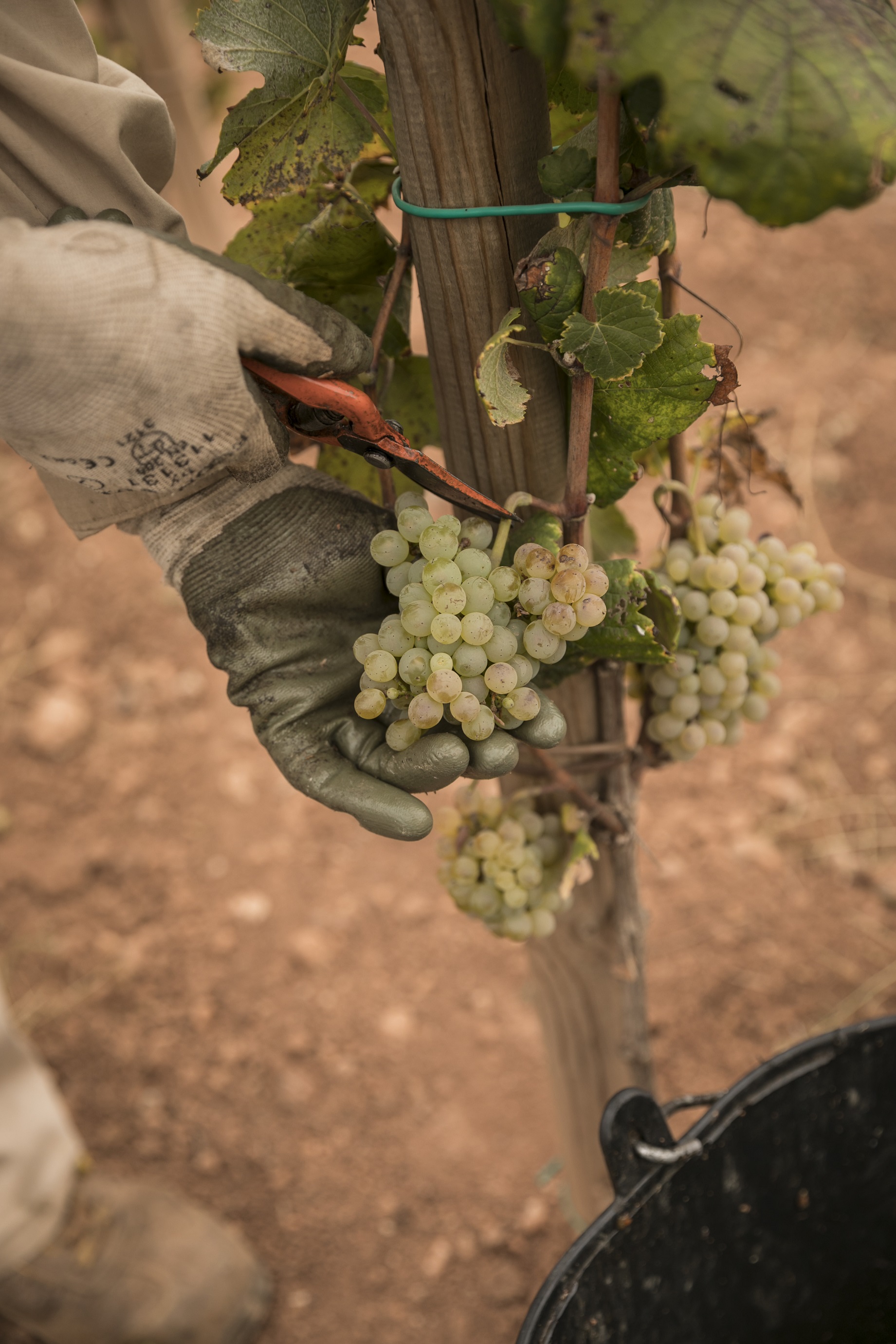When Is It Time to Harvest?

Deciding on the precise moment to begin harvesting at our estates and vineyards is based on an unspoken agreement between winegrowing and winemaking, between the vineyard and the winery. It is about finding a moment that satisfies both winegrowers and winemakers, a moment that strikes a balance between the former's inherent desire for an early harvest to not risk ruining an entire year's work, and the latter's preference for waiting a little longer until the grapes reach optimal ripeness.
Ultimately, the decision consists in agreeing on the most suitable moment based on the type of wine you want to make, taking into account the various criteria that determine ripeness at harvest time.

Harvest at Mas de la Rosa in Priorat with the namesake farmhouse in the background
A Brief Look at Ripeness
Nature understands the process of maturation from a reproductive standpoint, through the lens of sustenance and future survival.
Physiological grape maturity occurs during veraison, when the grapes are fully developed and ready for planting to germinate into new vines. This stage, however, is not that interesting as far as deciding on when to harvest is concerned.
The stage we would refer to as technological or sugar ripeness is what indicates that sugar and acidity levels are just right – a balance that will determine the primary profile of the wine we want to make.
During the aroma ripening stage, the herbaceous compounds gradually disappear, giving way to new aromatic precursors which are ultimately responsible for the organoleptic awakening of our olfactory sense: the gateway to our sensory perception as a wine taster.
In making our most prized red wines, phenolic ripeness plays a crucial role. At this stage, the grapes display a high concentration of polyphenols – mostly anthocyanins – which are responsible for color intensity and stability. At the same time, the tannins are ripe and soft, having shed every trace of their immature greenness. This is the moment!

Harvest at Mas de la Rosa vineyard in Priorat
Tasting Grapes
Tasting the grapes is how we evaluate the ripeness of aromas. In a way, it is a vindication of human experience – of the intuition and knowledge of our people – that cannot be replaced by any kind of technology. Every stage of grape tasting demands our full attention – a profound level of concentration that establishes an intimate relationship between the person and the plant.
We begin by observing the shape and color of the fruit; we get a tactile impression by squeezing the grape between our fingers to determine its consistency.
Silently the flesh speaks to us as it gradually detaches from the skin, which in turn invites us to explore the world of tannins, the level of maturity and aromatic potential.
Through the sensory deconstruction of the seeds, we focus on texture, level of maturity, and the composition of the tannins.
Bringing human experience into the mix perfectly complements the various analyses derived from the different ripeness-defining criteria, because our subjectivity shapes the objectivity of the data.

Harvesting the Forcada variety at Mas Palau vineyard (Santa Maria de Miralles, Alt Penedès)
The informed interpretation and the importance given to each of the parameters described – based on the kind of wine we want to make – not only determines when we should harvest, but also reveals arguments and reasons for why humanity and the grapevine have evolved side by side. It comes down to an understanding – “you take care of me, I'll take care of you” – that meets mutual needs, opens up new horizons, and energizes communities.
